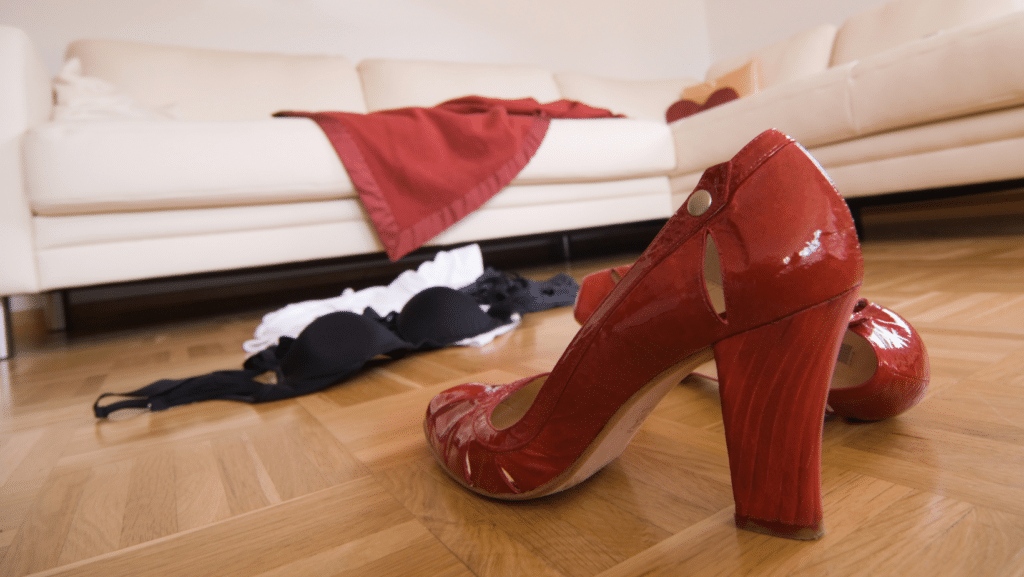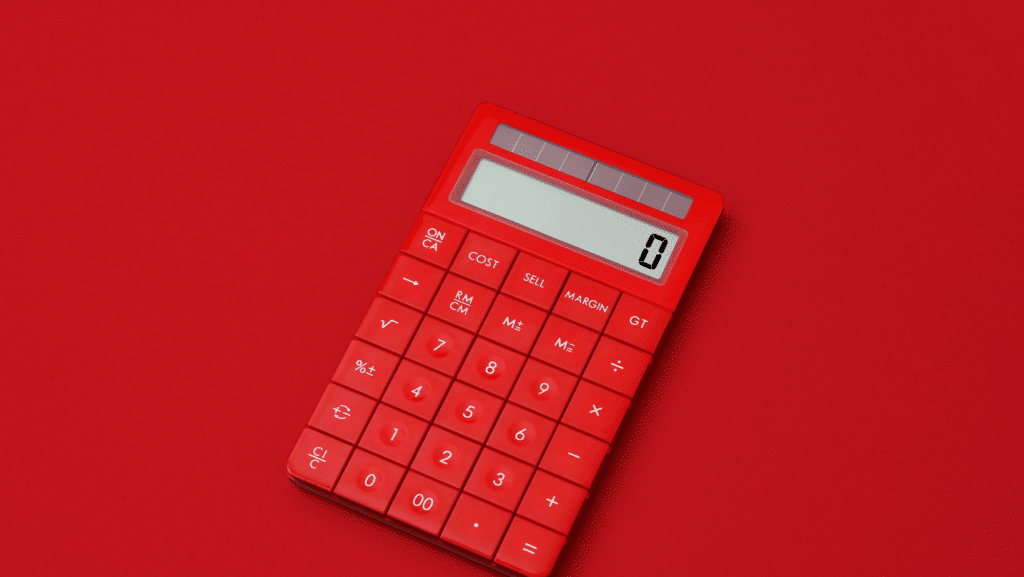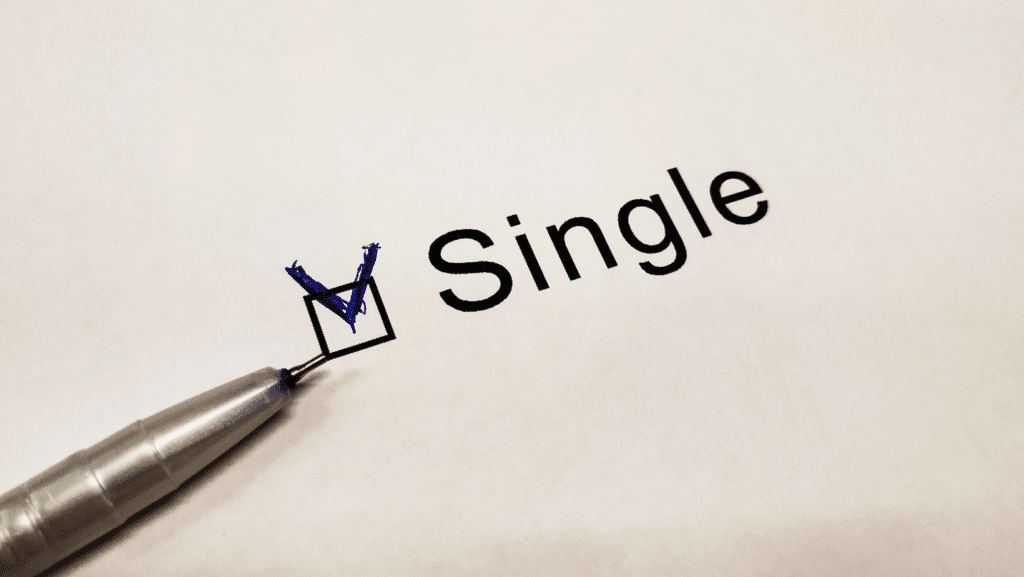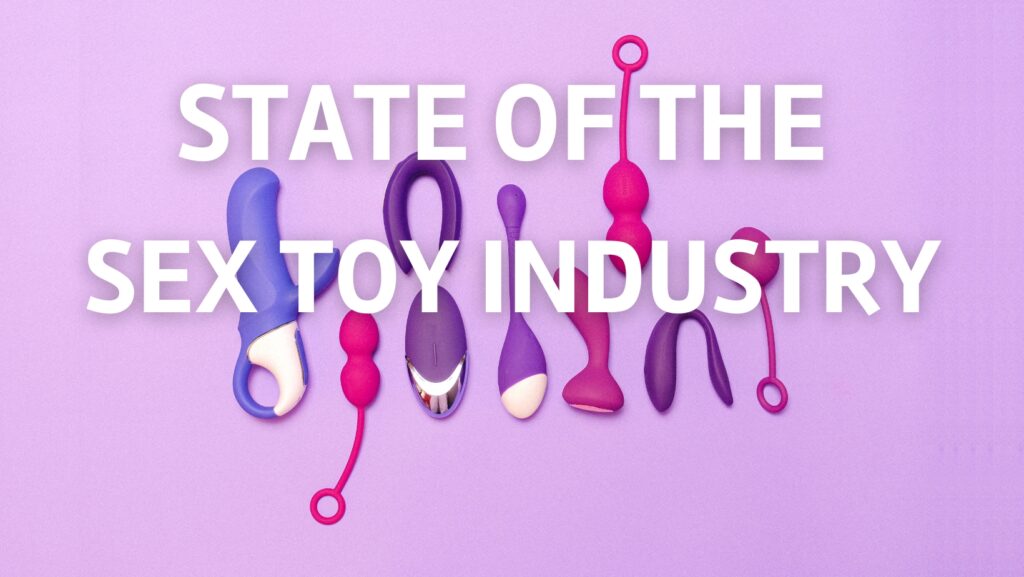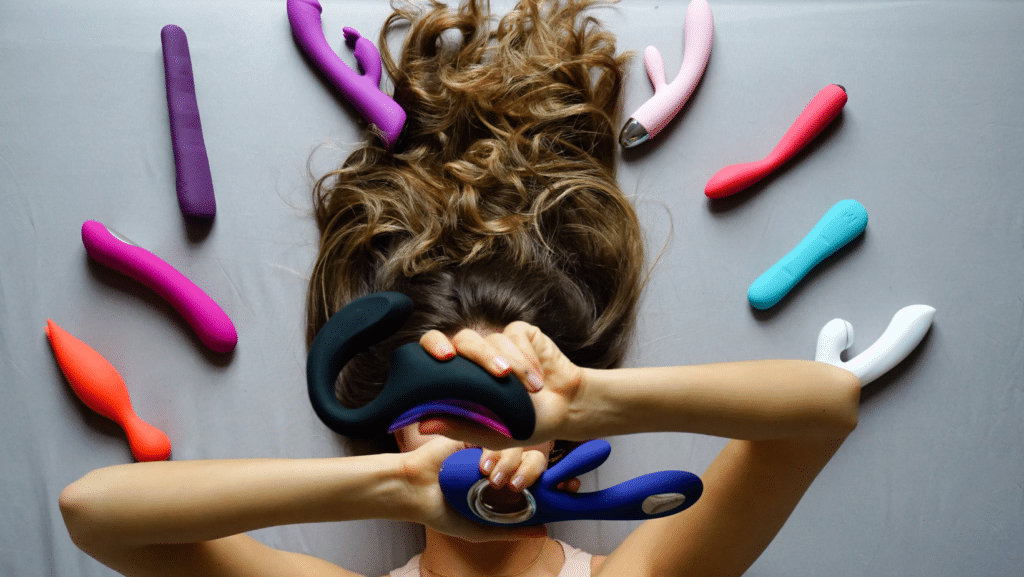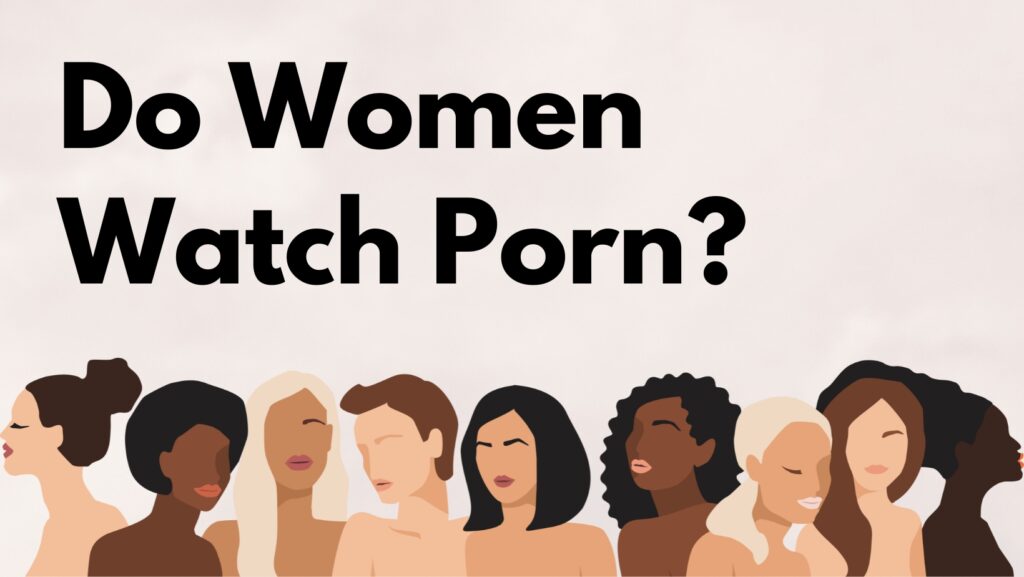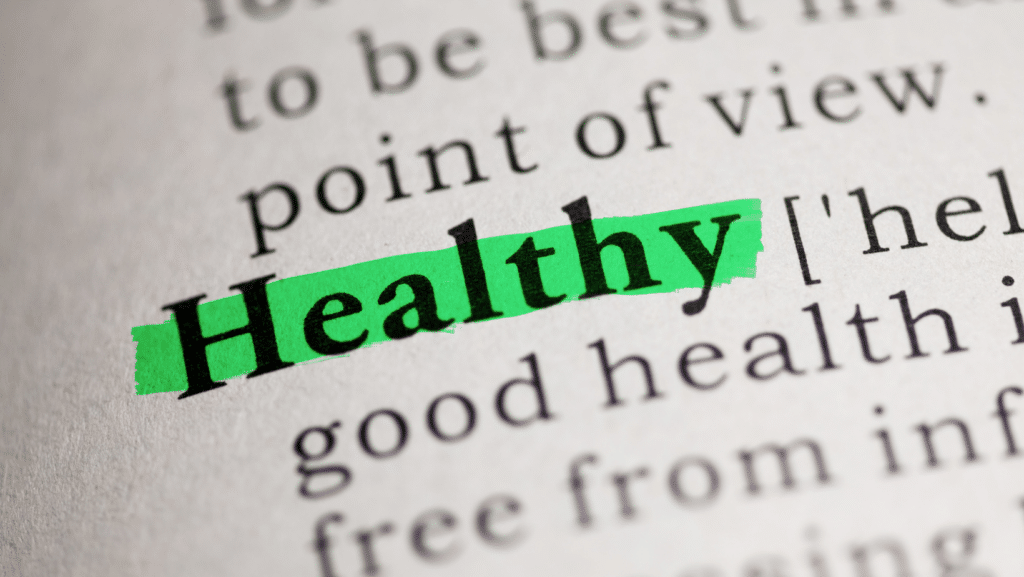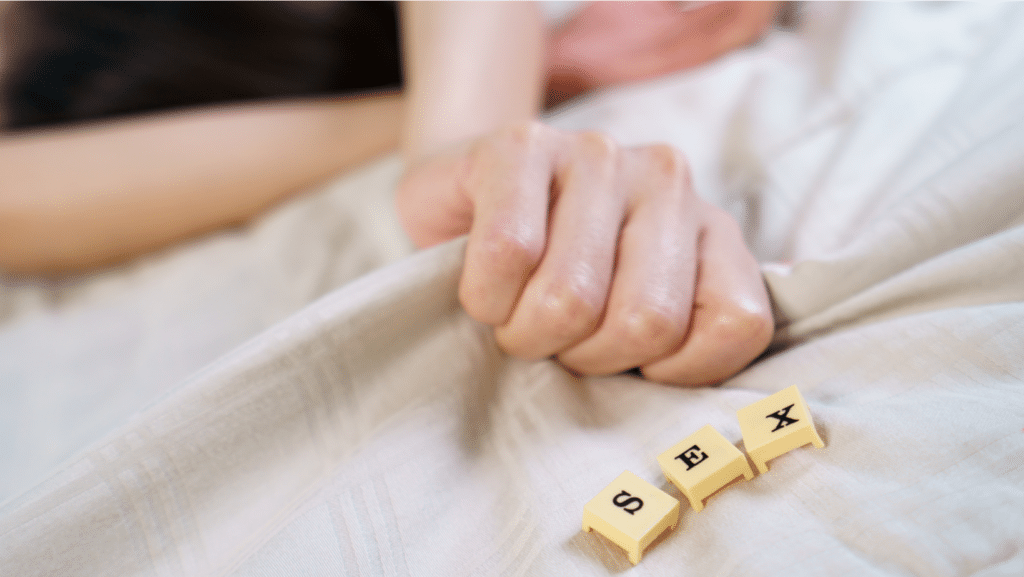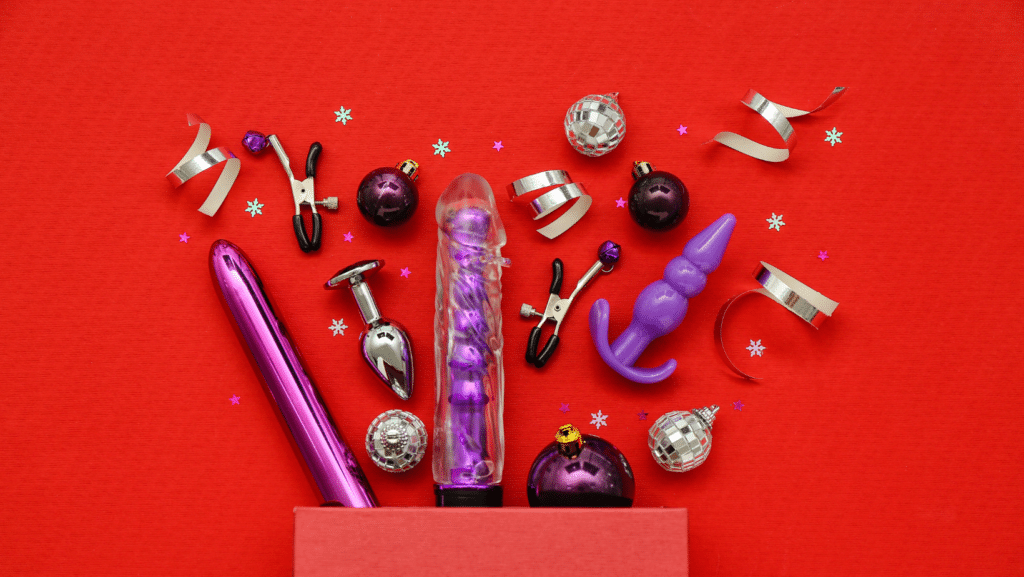Delve into the intriguing world of hookup culture, where casual encounters and fleeting connections shape the modern landscape of intimacy. Uncover surprising trends, unexpected truths, and the evolving dynamics of one-night stands and casual relationships. This insightful exploration offers a compelling glimpse into the realities of contemporary sexual experiences. Prepare to be enlightened and perhaps even surprised by what lies beneath the surface of hookup culture.
Here’s what we’ve covered in this piece:
- How many college students have hooked up?
- How often do college students hook up?
- Where do hookups happen?
- Motivations behind hooking up
- Who do hookups happen with?
- Hookups and relationships
- Age and hookups
- A culture revolution – Hookups have become more frequent
- Sex under the influence – Alcohol and drugs
- Top hookup college
- Feelings before – The motivation before hooking up
- Feeling after – Feelings and psychological effects
- Orgasms during hookups
- Impact of Hookup Culture on Mental Health
Key Takeaways
- Prevalence in College: 86% of college students have engaged in hookups, with an average of once every semester.
- Gender Differences: 91.3% of male and 82.1% of female college students report having hooked up.
- Perception vs. Participation: While 96% of college students believe their classmates are active in hookup culture, only 66% see themselves as participants.
- Hookup Frequency Over Time: The average number of hookups has decreased from 8.8 in 2000 to 8.0 in 2020.
- Hookup Locations: 67% of all hookups occur at parties, with dormitories and bars also being common venues.
- Motivations for Hooking Up: Physical pleasure (89%) and emotional connections (54%) are primary motivators.
- Hookups Leading to Relationships: 63% of current college relationships began as casual hookups.
- Impact of Alcohol and Drugs: 93% of hookups with strangers involved alcohol or marijuana.
- Orgasm Gap: Only 11.2% of women reported having an orgasm during their last hookup, compared to 88.1% of men.
- Mental Health Concerns: Engagement in hookup culture is linked to feelings of loneliness, anxiety, and depression.
- Sexual Assault and Harassment: There’s a higher likelihood of non-consensual sexual activity within a hookup culture.
- Top ‘Hookup’ Colleges: James Madison University, University of Buffalo, and University of Kansas are among the most sexually active campuses.
How many college students have hooked up?
The survey showed that…
- 86% of college students report that they have hooked up in college.
- 93% of college students believe their college is dominated by a hookup culture.
- 8% leave college as a virgin.
That is of course slightly different if we look at how that is reported in the surveys by each gender:
- 91.3% of male college students report having hooked up in college.
- 82.1% of female college students report having hooked up in college.
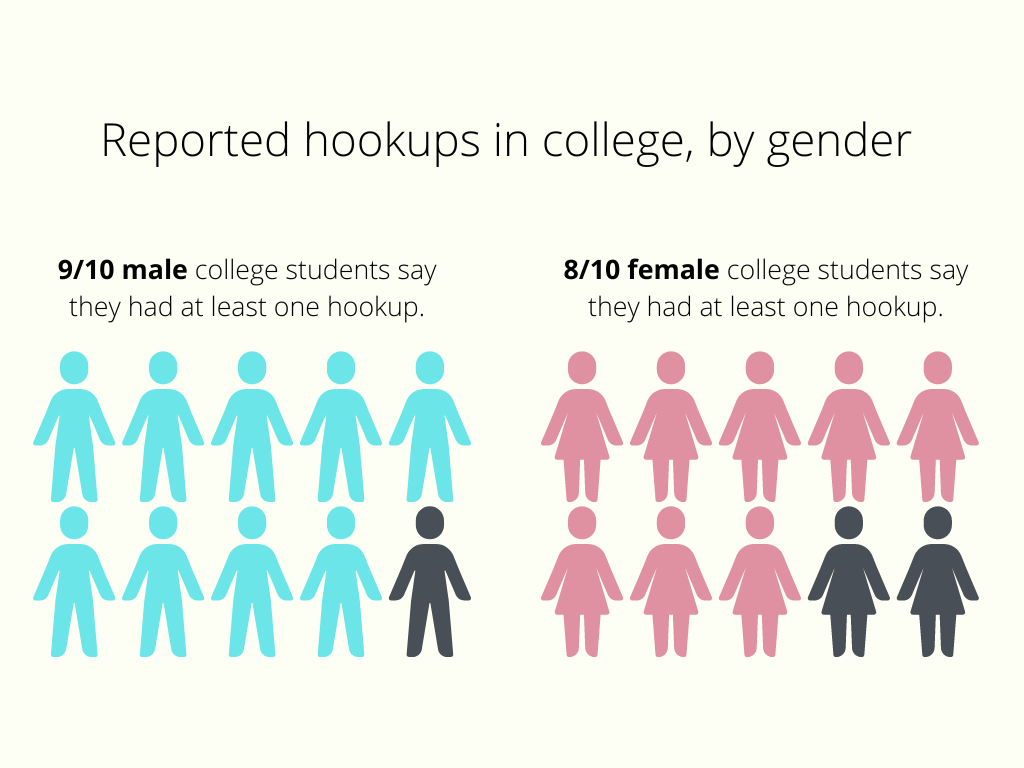
When asked more specifically about their participation in the hookup culture and the participation of their classmates the answers show a bias against participation:
- College students on average report, that 96% of their classmates actively take part in the hookup culture.
- Only 66% of college students believe that they participate in the hookup culture.
In sum, college students are much more likely to believe that their classmates are part of the hookup culture statistics than themselves.
How often do college students hook up?
- The average college student reports having casual sex on average once every semester.
- College students on average have 8 hookups during college.
Despite this statistic, it was surprising to find that…
- 80% of college students hook up less than once per semester (every 6 months) during college.
So, the high average frequency comes down to the last 20% of college students.
- 61.9% of college students reported that the last time they had sex was during a hookup.
That is almost 2/3 of every college student whose last sexual encounter was “casual sex”.
But how has that changed over time?
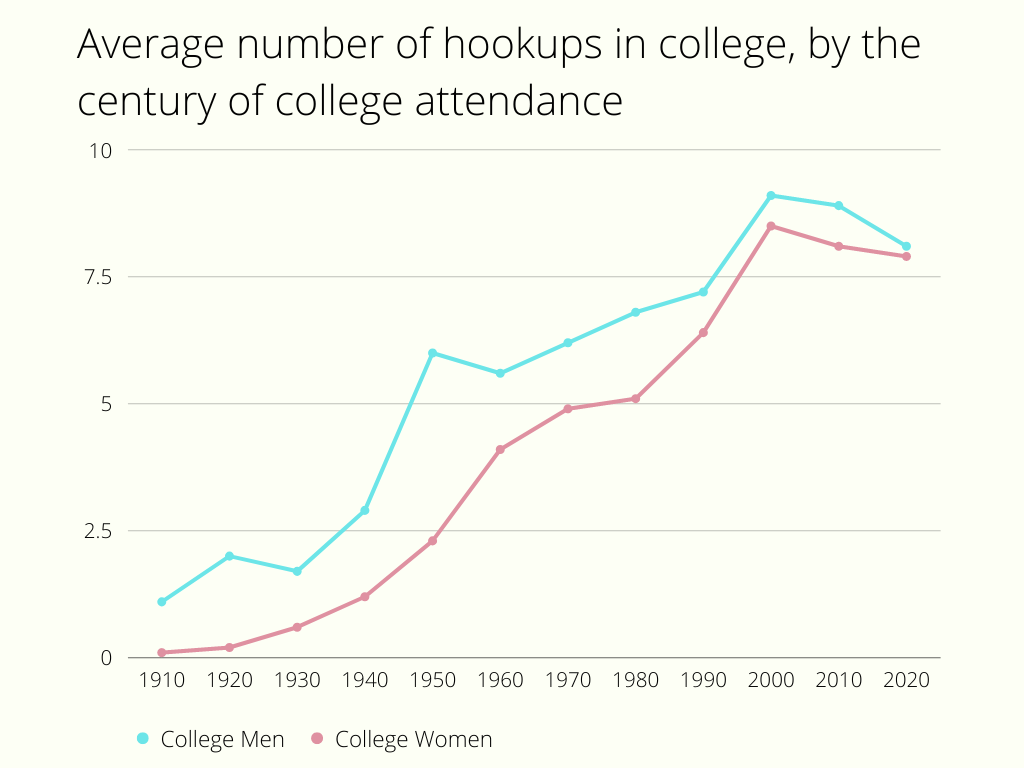
The statistics show that…
- Male college students report to have had 34% more hookups compared to female college students (1910-2020).
| Century | Avg. male hookups reported | Avg. female hookups reported | Percentage more hookups |
|---|---|---|---|
| 1910 | 1.1 | 0.1 | 90.9% |
| 1920 | 2.0 | 0.2 | 90.0% |
| 1930 | 1.7 | 0.6 | 64.7% |
| 1940 | 2.9 | 1.2 | 58.6% |
| 1950 | 6.0 | 2.3 | 61.7% |
| 1960 | 5.6 | 4.1 | 26.8% |
| 1970 | 6.2 | 4.9 | 20.9% |
| 1980 | 6.8 | 5.1 | 25.0% |
| 1990 | 7.2 | 6.4 | 11.1% |
| 2000 | 9.1 | 8.5 | 6.6% |
| 2010 | 8.9 | 8.1 | 8.9% |
| 2020 | 8.1 | 7.9 | 2.5% |
- In 2020 the discrepancy between how many hookups male versus female college students reported was +2.5%, which is the lowest point (only 0.2 hookups were reported by male students compared to female students).
- The average number of hookups in college has risen from 0.6 per student in 1910 to 8.8 in 2000.
- The average number of reported hookups fell from 8.8 in 2000 to 8.0 in 2020.
However, the number of hookups that men and women report is not the only difference.
Another interesting look into the dataset revealed that…
- The chances of a date ending in a hookup are 7 times higher when the girl invites on the date.
- 82% of men and only 57% of women are glad they had a hookup afterward.
- 92% of men and only 66% of women have told friends about their most recent hookup.
Where do hookups happen?
- 67% of all hookups happen at parties.
- 51% of hookups take place in a dormitory.
- 10% of hookups take place in bars and clubs.
- 4% of hookups happen in private vehicles.
- 35% of hookups happen in any other available place.
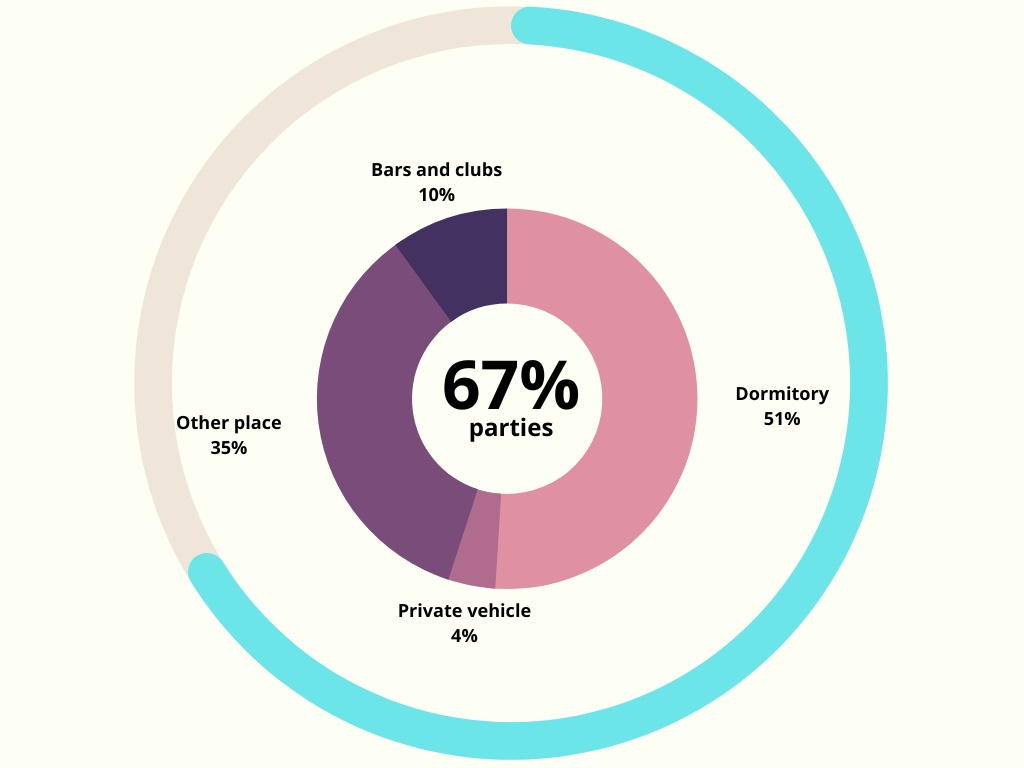
Note, that we allowed multiple answers, and “parties” overlap with locations.
Motivations behind hooking up
To figure out the motivations behind why hookup happens we asked respondents to report the reasons they engaged in their most recent hookup.
- 89% reported that physical pleasure was a reason they hooked up.
- 54% reported that emotional reasons and connections motivated them to hook up.
- 8% reported that they felt motivated by others hooking up as well.
- 4% report that they hooked up with someone because of peer pressure.
Who do hookups happen with?
When asked about their most recent hookup, and who that person was…
- 8.3% hooked up with a stranger.
- 24.0% hooked up with someone they were acquainted with.
- 53.8% hooked up with a friend.
- 13.8% hooked up with an ex-girlfriend or -boyfriend.
Hookups and relationships
We also touched upon the interplay between hookups and relationships. At first they might seem like opposites. Data will tell you otherwise.
- 63% of college students report that their current relationships started as a casual hookup.
We also asked college students about how hooking up with someone might have been an act of infidelity:
- 39% of college students report that they have hooked up with someone other than their partner (at the time).
Only 2% of college students report that their infidelity wasn’t with a hookup.
Age and hookups
So, we also wanted to know what age groups are hooking up the most
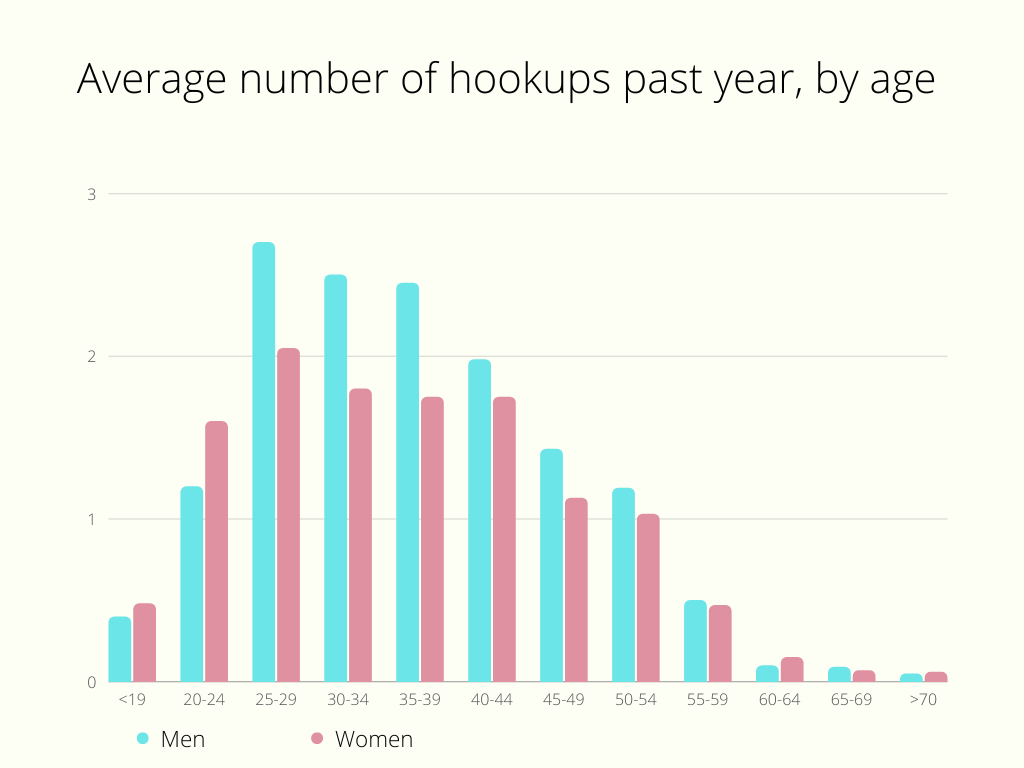
- 25-29-year-olds hook up on average 2.7 times in the past year, making it the most active age group.
- Men generally report hooking up more, despite young men compared to young women (<24 years old).
- Hookups are most frequent at the age of 25-29, from where the number of hookups drops by -11% per year until the age of 60.
A culture revolution – Hookups have become more frequent
Using an aggregate dataset of multiple surveys with comparatively question formulations we were able to identify – over time – the relative amount of college students who have had a hookup experience.
Det data was only available for certain years but showed a visible trend:
- Hookups have increased 10-fold over the last 100 years.
- In the last 2 centuries, the average number of hookups has declined.
- The biggest increase (+300%) in the average number of reported hookups during college was from 1920 to 1950.

Sex under the influence – Alcohol and drugs
It is maybe not surprising to most, that being under the influence and casual sex often goes hand in hand. But we set out to uncover the exact numbers and facts of sex under the influence of alcohol and drugs.
- 93% of hookups with strangers involved some alcohol or marijuana.
- 31% of hookups that happen between Exes involve alcohol or marijuana.
- Hookups involving Marijuana are most likely to happen between Exes.
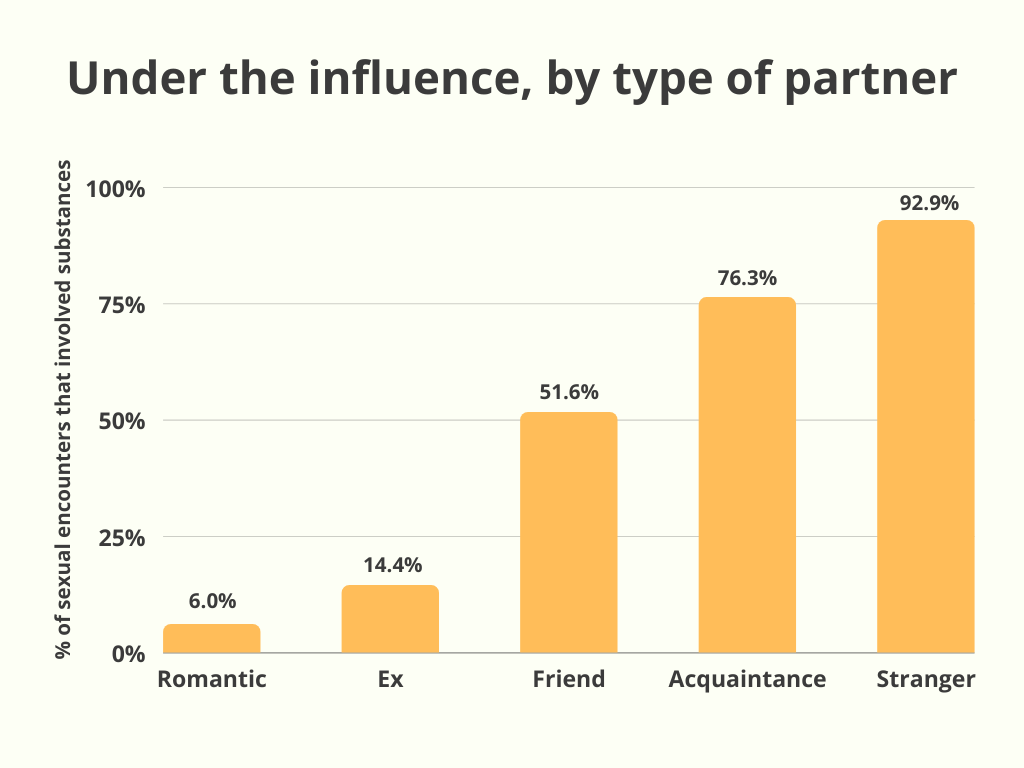
Top hookup college
We asked respondents to answer if they were looking primarily for love or hookups at the moment. Then we ranked each university by the proportion of students looking for love versus hookups.
Top ranking ‘Hookup colleges’ (% looking for hookups):
- James Madison University (65%)
- University at Buffalo (65%)
- University of Kansas (64%)
- University of Oregon (62%)
- University of Maryland (62%)
- Appalachian State University (61%)
- Radford University (58%)
- Boston University (58%)
- Colorado State University (57%)
- Vanderbilt University (56%)
Top ranking ‘Love colleges’ (% looking for love):
- Western Kentucky University (71%)
- Florida State University (68%)
- Columbia University (66%)
- Central Michigan University (66%)
- Bowling Green State University (66%)
- Eastern Kentucky University (65%)
- Virginia Commonwealth University (62%)
- Harvard University (61%)
- University of California, UCLA (60%)
- Temple University (60%)
Feelings before – The motivation before hooking up
Surprisingly, when respondents were asked about their motivations for hooking up we did NOT find any significant differences between genders, albeit differences have been present for almost all other aspects of hookup culture.
We asked respondents to cite all the reasons for hooking up that they felt were important, and the same motivations were reported by both men and female.
- 89% of college students reported physical satisfaction as a reason for wanting to hook up.
- 54% of college students reported emotional satisfaction as a reason for wanting to hook up.
- 51% of college students reported a desire for a romantic relationship as a reason for wanting to hook up.
However, we also asked respondents to report what immediate feelings they acted on the last time they hooked up. The answers reveal some new motivations:
- 80% reported that a sexual desire was a reason they hooked up in the moment.
- 58% reported a spontaneous urge as a reason they hooked up in the moment.
- 56% reported feeling attracted to the partner as a reason they hooked up in the moment.
- 51% reported intoxication as a reason they hooked up in the moment.
- 33% reported the willingness of the other person as a reason they hooked up at the moment.
- 29% reported a desire to feel attractive or desirable as a reason they hooked up at the moment.
Note: In both survey answers respondents were allowed to choose all answers they felt were part of the reason they wanted to hookup or as the reason they did it.
Feelings after – Feelings and psychological effects
In general, the dataset shows that…
- 82% of men felt glad they engaged in a casual hookup.
- 57% of women felt glad they engaged in a casual hookup.
Of other feelings, the data shows that…
- 35% reported feelings of regret and disappointment.
- 27% reported feelings of happiness.
- 20% reported feeling satisfied and fulfilled.
- 11% reported being confused.
- 9% reported feeling proud.
- 7% reported feeling excited or nervous (still after it had happened).
- 2% reported feeling attractive or desirable
Even though the very last bullet point is maybe the least noticeable (that only 2% feel desirable or wanted after a hookup) it is especially interesting when compared to the motivation reported by respondents for hooking up:
- 29% reported a desire to feel attractive or desirable as a reason for hooking up, while only 2% reported having those feelings after a hookup.
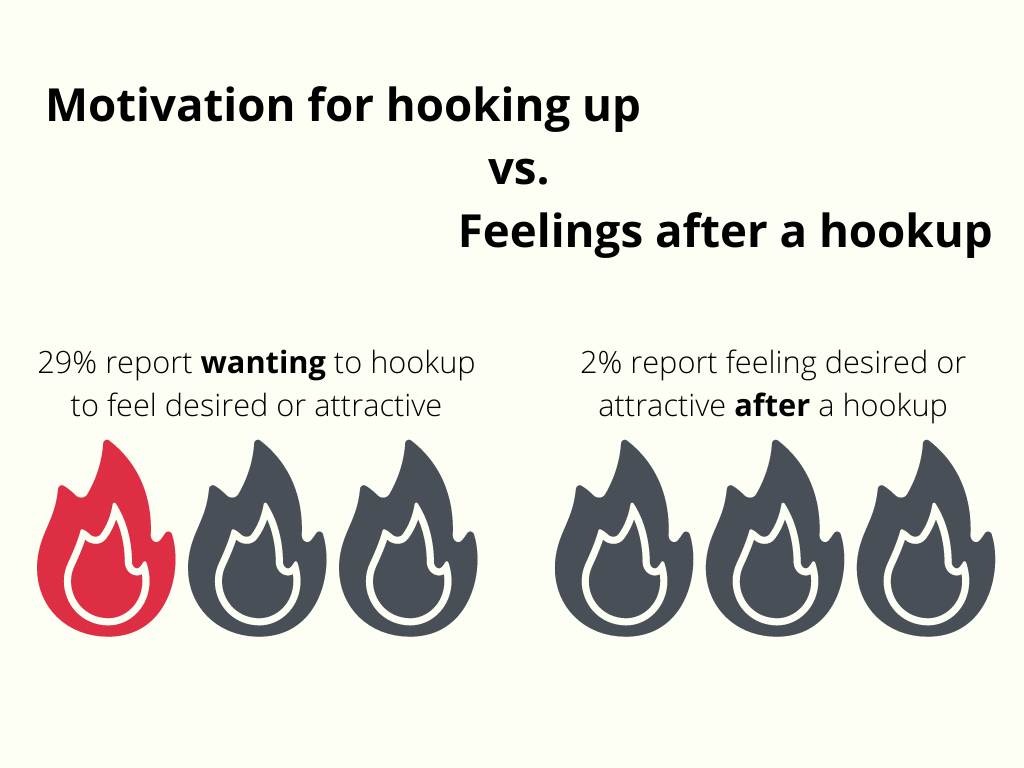
Benefits of hookups
The most common benefits identified were sexual satisfaction (23%), general positive emotions (21%), increased confidence (11%), and clarification of feelings (11%).
Overall, 71% reported at least one benefit, but 29% reported no benefits.
When only 23% report being sexually satisfied it is a natural thing to have a look at orgasms.
Orgasms during hookups
- Only 11.2% of women report having an orgasm during their last hookup.
- 88.1% of men achieved orgasm during their last hookup.
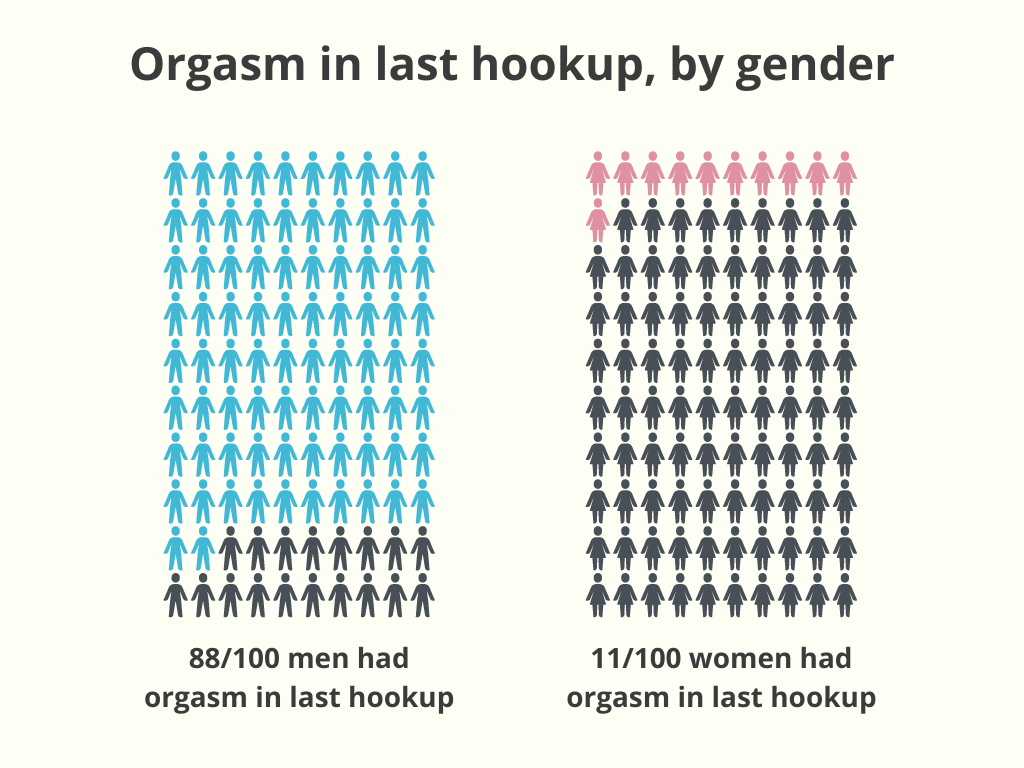
The orgasm gap exists in hookups as well, and it is even more present here than in any other instance.
If you take a look at the percentage of orgasms by gender and sexuality when people are sexually intimate the numbers are vastly different:
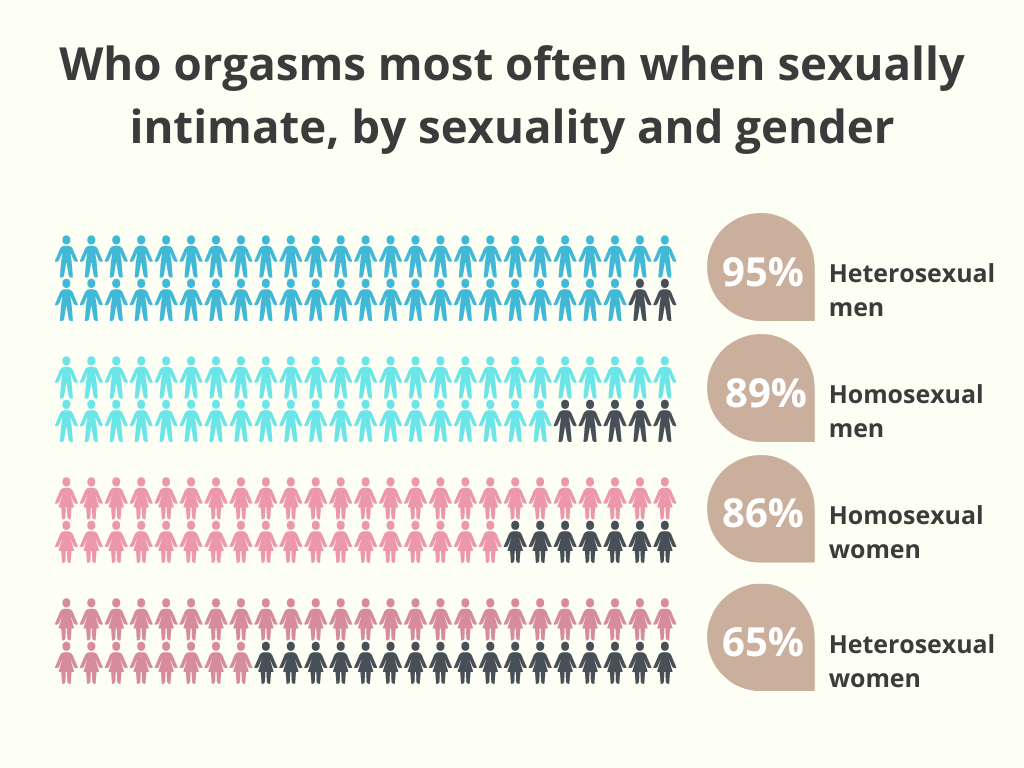
- Women are 6 times less likely to achieve an orgasm during a hookup compared to with a partner.
- Men are 8 times more likely to achieve orgasms during hookups compared to women.
- If you are interested in learning more you can have a look at our study of orgasms.
Impact of Hookup Culture on Mental Health
While hookup culture has become a normalized aspect of college life, it is important to acknowledge the potential negative impact it can have on mental health. Studies have shown that individuals who engage in hookup culture are more likely to experience feelings of loneliness, anxiety, and depression. This is partly due to the lack of emotional intimacy and connection that is often associated with casual sex.
Furthermore, hookup culture can perpetuate harmful gender stereotypes and contribute to a culture of sexual assault and harassment. Research has shown that individuals who participate in hookup culture are more likely to engage in non-consensual sexual activity.
Colleges and universities need to prioritize comprehensive sexual education (only 50% receive proper sex education in schools/universities/etc) and consent education to promote healthy sexual relationships and reduce the negative effects of hookup culture. Additionally, providing resources for mental health support can help students cope with the emotional toll that hookup culture can have.
- Individuals who engage in hookup culture are more likely to experience feelings of loneliness, anxiety, and depression.
- Hookup culture can perpetuate harmful gender stereotypes and contribute to a culture of sexual assault and harassment.
- Research has shown that individuals who participate in hookup culture are more likely to engage in non-consensual sexual activity.
- 63% of college women who reported experiencing non-consensual sexual contact said it occurred during a hookup.
- Colleges and universities with a higher prevalence of hookup culture have also been found to have higher rates of mental health issues among students.
References
Brown, J. L., & Vanable, P. A. (2007). Alcohol use, partner type, and risky sexual behavior among college students: Findings from an event-level study. Addictive Behaviors, 32, 2940-2052. doi:10.1016/j.addbeh.2007.06.011
Fielder, R. L., & Carey, M. P. (2010). Prevalence and characteristics of sexual hookups among first-semester female college students. Journal of Sex and Marital Therapy, 36, 346-359. doi:10.1080/0092623X.2010.488118
Fisher, M. L., Worth, K., Garcia, J. R., & Meredith, T. (2012). Feelings of regret following uncommitted sexual encounters in Canadian university students. Culture, Health, & Sexuality, 14, 45-57. doi: 10.1080/13691058.2011.619579
Regan, P. C., & Dreyer, C. S. (1999). Lust? Love? Status? Young adults’ motives for engaging in casual sex. Journal of Psychology and Human Sexuality, 11, 1-24. doi:10.1300/J056v11n01_01
Vander Ven, T., & Beck, J. (2009). Getting drunk an hooking up: An exploratory study of the relationship between alcohol intoxication and casual coupling in a university sample. Sociological Spectrum, 29, 626-648. doi: 10.1080/02732170903051417
Walsh, J. L., Fielder, R. L., Carey, K. B., & Carey, M. P. (2013). Do alcohol and marijuana use decrease the probability of condom use for college women? Journal of Sex Research. E-pub ahead of print. doi:10.1080/00224499.2013.821442
White, H. R., Fleming, C. B., Catalano, R. F., & Bailey, J. A. (2009). Prospective expectancies among alcohol use-reslated sexual enhancement expectancies, sex after alcohol use, and casual sex. Psychology of Addictive Behaviors, 23, 702-707. DOI: 10.1037/a0016630
Armstrong EA, England P, Fogarty ACK. Accounting for women’s orgasm and sexual enjoyment in college hookups and relationships. American Sociological Review. 2012;77:435–462.
Arnett JJ. Emerging adulthood: A theory of development from the late teens through the twenties. American Psychologist. 2000;55:469–480.
Authors Blinded title. Journal of Sex Research. 2014
Bogle KA. Hooking up: Sex, dating, and relationships on campus. New York University Press; New York: 2008.
Claxton SE, van Dulmen MHM. Casual sexual relationships and experiences in emerging adulthood. Emerging Adulthood. 2013;1:138–150.
Crocker J, Knight KM. Contingencies of self-worth. Current Directions in Psychological Science. 2005;14:200–203.
England P, Shafer EF, Fogarty ACK. Hooking up and forming romantic relationships on today’s college campuses. In: Kimmel M, editor. The Gendered Society Reader. 3rd New York; Oxford University Press: 2008. pp. 531–547.
Garcia JR, Reiber C. Hook-up behavior: A biopsychosocial perspective. Journal of Social, Evolutionary, and Cultural Psychology. 2008;2:192–208.
Garcia JR, Reiber C, Massey SG, Merriwether AM. Sexual hookup culture: A review. Review of General Psychology. 2012;16:161–176.
Hamilton L, Armstrong EA. Gendered sexuality in young adulthood: Double binds and flawed options. Gender and Society. 2009;23:589–616.
Kelly C. Feminist ethics in evaluating the hookup culture. Journal of Feminist Studies in Religion. 2012;28:27–48.
Landis JR, Koch GG. The measurement of observer agreement for categorical data. Biometrics. 1977;33:159–174.
Lewis MA, Atkins DC, Blayney JA, Dent DV, Kaysen DL. What is hooking up? Examining definitions of hooking up about behavior and normative perceptions. Journal of Sex Research. 2013;50:757–766.
Miller WL, Crabtree BF. Primary care research: A multimethod typology and qualitative road map. In: Crabtree BF, Miller WL, editors. Doing qualitative research. Sage; Newbury Park, CA: 1992. pp. 3–28.
Napper LE, Montes KS, Kenney SR, LaBrie JW. Assessing the personal negative impacts of hooking up experienced by college students: Gender differences and mental health. Journal of Sex Research. 2015 [Advance online publication.] doi:10.1080/00224499.2015.1065951.
Owen J, Quirk K, Fincham F. Toward a more complete understanding of reactions to hooking up among college women. Journal of Sex and Marital Therapy. 2014;40:396–409.
Paul EL, Wenzel A, Harvey J. Hookups: A facilitator or a barrier to relationship initiation and intimacy development? In: Sprecher S, Wenzel A, Harvey J, editors. Handbook of relationship initiation. Psychology Press; New York: 2008. pp. 375–390.
Shulman S, Connolly J. The challenge of romantic relationships in emerging adulthood: Reconceptualization of the field. Emerging Adulthood. 2013;1:27–39.
Snapp S, Ryu E, Kerr J. The upside to hooking up: College students’ positive hookup experiences. International Journal of Sexual Health. 2015;27:43–56.
Tolman DL, McClelland SI. Normative sexuality development in adolescence: A decade in review, 2000-2009. Journal of Research on Adolescence. 2011;21:242–255.
Vrangalova Z. Does casual sex harm college students’ well-being? A longitudinal investigation of the role of motivation. Archives of Sexual Behavior. 2015;44:945–959.
Laumann, E.O., Gagnon, J., Michael, R., & Michaels, S. (1994). The social organization of sexuality: Sexual practices in the United States. Chicago: University of Chicago Press.
Arnett JJ. Emerging adulthood: A theory of development from the late teens through the twenties. American Psychologist. 2000;55:469–480. doi: 10.1037/0003-066X.55.5.469.
Bisson MA, Levine TR. Negotiating a friends-with-benefits relationship. Archives of Sexual Behavior. 2009;38:66–73. doi: 10.1007/s10508-007-9211-2
Bogle KA. The shift from dating to hooking up in college: What scholars have missed. Sociology Compass. 2007;1/2:775–788.
Bradshaw C, Kahn AS, Saville BK. To hook up or date: Which gender benefits? Sex Roles. 2010;62:661–669. doi: 10.1007/s11199-010-9765-7.
Buss DM, Schmitt DP. Sexual strategies theory: An evolutionary perspective on human mating. Psychological Review. 1993;100:204–232. doi: 10.1037/0033-295X.100.2.204.
Campbell A. The morning after the night before Affective reactions to one-night stands among mated and unmated women and men. Human Nature. 2008;19:157–173. doi: 10.1007/s12110-008-9036-2.
Conley TD. Perceived proposer personality characteristics and gender differences in acceptance of casual sex offers. Journal of Personality and Social Psychology. 2011;100:309–329. doi: 10.1037/a0022152.
Downing-Matibag TM, Geisinger B. Hooking up and sexual risk-taking among college students: A health belief model perspective. Qualitative Health Research. 2009;19:1196–1209. doi: 10.1177/1049732309344206.
Fielder RL, Carey MP. Predictors and consequences of sexual “hookups” among college students: A short-term prospective study. Archives of Sexual Behavior. 2010b;39:1105–1119. doi: 10.1007/s10508-008-9448-4.
Flack WF, Daubman KA, Caron ML, Asadorian JA, D’Aureli NR, Gigliotti SN, Stine ER. Risk factors and consequences of unwanted sex among university students: Hooking up, alcohol, and stress response. Journal of Interpersonal Violence. 2007;22:139–157. doi: 10.1177/0886260506295354.
Glenn N, Marquardt E. Hooking up, hanging out, and hoping for Mr Right: College women on dating and mating today. New York, NY: Institute for American Values; 2001.
Greenspan S. 11 points guide to hooking up: Lists and advice about first dates, hotties, scandals, pickups, threesomes, and booty calls. New York, NY: Skyhorse Publishing; 2011.
Gute G, Eshbaugh EM. Personality as a predictor of hooking up among college students. Journal of Community Health Nursing. 2008;25:26–43. doi: 10.1080/07370010701836385.
Heldman C, Wade L. Hook-up culture: Setting a new research agenda. Sexuality Research and Social Policy. 2010;7:323–333. doi: 10.1007/s13178-010-0024-z.
Holman A, Sillars A. Talk about “hooking up”: The influence of college student social networks on nonrelationship sex. Health Communication. 2012;27:205–216. doi: 10.1080/10410236.2011.575540.
Lambert TA, Kahn AS, Apple KJ. Pluralistic ignorance and hooking up. Journal of Sex Research. 2003;40:129–133. doi: 10.1080/00224490309552174.
Lewis MA, Granato H, Blayney JA, Lostutter TW, Kilmer JR. Predictors of hooking up sexual behavior and emotional reactions among U.S. college students. Archives of Sexual Behavior. 2011 doi: 10.1007/s10508-011-9817-2.
Madison A. Hooking up: A girl’s all-out guide to sex and sexuality. New York, NY: Prometheus Books; 2006.
Manning WS, Giordano PC, Longmore MA. Hooking up: The relationship contexts of “nonrelationship” sex. Journal of Adolescent Research. 2006;21:459–483. doi: 10.1177/0743558406291692.
Owen J, Fincham FD. Young adults’ emotional reactions after hooking up encounters. Archives of Sexual Behavior. 2011;40:321–330. doi: 10.1007/s10508-010-9652-x.
Owen J, Fincham FD, Moore J. Short-term prospective study of hooking up among college students. Archives of Sexual Behavior. 2011;40:331–341. doi: 10.1007/s10508-010-9697-x.
Owen JJ, Rhoades GK, Stanley SM, Fincham FD. “Hooking up” among college students: Demographic and psychosocial correlates. Archives of Sexual Behavior. 2010;39:653–663. doi: 10.1007/s10508-008-9414-1.
Paik A. “Hookups,” dating, and relationship quality: Does the type of sexual involvement matter? Social Science Research. 2010a;39:739–753. doi: 10.1016/j.ssresearch.2010.03.011.
Paul EL. Beer goggles, catching feelings, and the walk of shame: The myths and realities of the hookup experience. In: Kirkpatrick DC, Duck S, Foley MK, editors. Relating difficulty: The processes of constructing and managing difficult interaction. Mahwah, NJ: Lawrence Erlbaum Associates; 2006. pp. 141–160.
